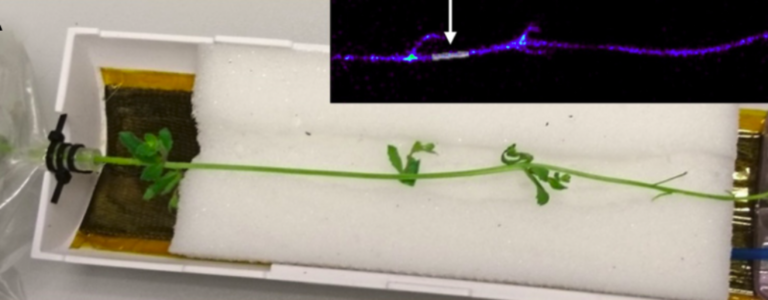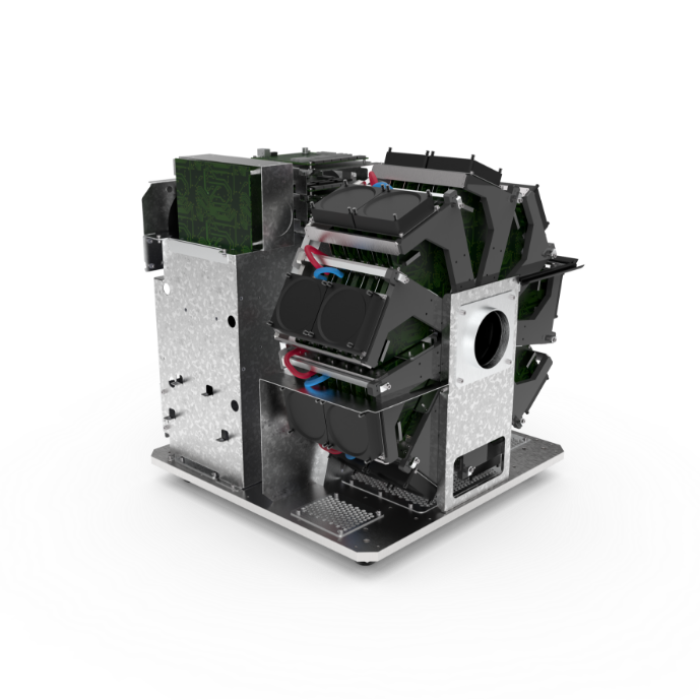Guide to Plant-PET Imaging Using 11CO2
In this paper by Mincke et al., the MOLECUBES β-CUBE was used to investigate whether PET imaging can be an added value in plant sciences and more specifically to study the phloem transport of 11CO2 in Arabidopsis (thale cress).
Due to its high sensitivity and specificity for tumor detection, positron emission tomography (PET) has become a standard and widely used molecular imaging technique. Given the popularity of PET, both clinically and preclinically, its use has been extended to study plants. However, only a limited number of research groups worldwide report PET-based studies, while we believe that this technique has much more potential and could contribute extensively to plant science. The limited application of PET may be related to the complexity of putting together methodological developments from multiple disciplines, such as radio-pharmacology, physics, mathematics and engineering, which may form an obstacle for some research groups. By means of this manuscript, we want to encourage researchers to study plants using PET. The main goal is to provide a clear description on how to design and execute PET scans, process the resulting data and fully explore its potential by quantification via compartmental modeling. The different steps that need to be taken will be discussed as well as the related challenges. Hereby, the main focus will be on, although not limited to, tracing 11-CO2 to study plant carbon dynamics.
The image below show a plant-PET setup for a study on visualizing phloem transport in Arabidopsis. The rosette of the plant was hereby labeled with one pulse of 11-CO2, while the inflorescence was positioned inside the field of view (diameter of the stem was 1.8 mm).
Research question
Due to its high sensitivity and specificity for tumor detection, positron emission tomography (PET) has become a standard and widely used molecular imaging technique. Given the popularity of PET, both clinically and preclinically, its use has been extended to study plants. However, only a limited number of research groups worldwide report PET-based studies, while we believe that this technique has much more potential and could contribute extensively to plant science. The limited application of PET may be related to the complexity of putting together methodological developments from multiple disciplines, such as radio-pharmacology, physics, mathematics and engineering, which may form an obstacle for some research groups.
Experiment
By means of this manuscript, the researchers want to encourage researchers to study plants using PET. The main goal is to provide a clear description on how to design and execute PET scans, process the resulting data and fully explore its potential by quantification via compartmental modeling. The different steps that need to be taken will be discussed as well as the related challenges. Hereby, the main focus will be on, although not limited to, tracing 11-CO2 to study plant carbon dynamics.
Results
The image below show a plant-PET setup for a study on visualizing phloem transport in Arabidopsis. The rosette of the plant was hereby labeled with one pulse of 11-CO2, while the inflorescence was positioned inside the field of view (diameter of the stem was 1.8 mm).

